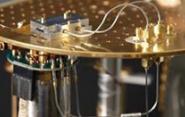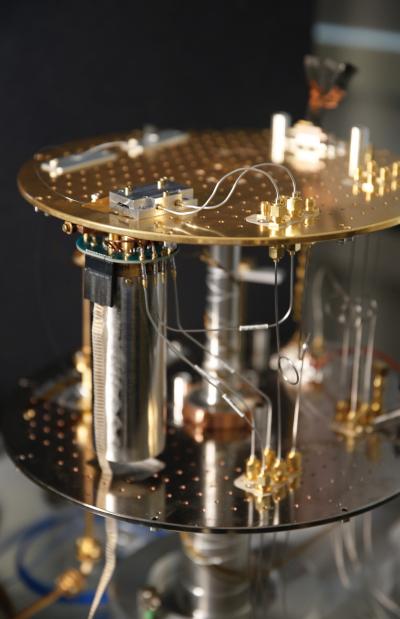New superconducting device could boost quantum tech

Superconducting circuits, which conduct electricity without resistance, are among the most promising technologies for quantum computing and ultrafast logic circuits. However, finding a practical way to work with these materials that require extremely cold temperatures has been a challenge.
 In a step toward that goal, a team of researchers led by Prof. Hong Tang developed and successfully demonstrated a device that presents a viable solution in transferring a very weak signal from a computing device stored at cryogenic temperatures to room temperature electronics to achieve a fast data transfer with very low energy consumption. The results are published in Nature Photonics.
In a step toward that goal, a team of researchers led by Prof. Hong Tang developed and successfully demonstrated a device that presents a viable solution in transferring a very weak signal from a computing device stored at cryogenic temperatures to room temperature electronics to achieve a fast data transfer with very low energy consumption. The results are published in Nature Photonics.
The practical use of superconducting circuits requires connecting them to room temperature electronics. But doing so has largely relied on coaxial cables, which have a limited bandwidth and limited thermal conductivity – two factors that negate the benefits of superconducting circuits.
Fiber optic links offer a promising alternative since they have both a high bandwidth and a low thermal load. However, their ability to use photons to read signals is stifled by the stringent requirements of superconducting circuits. To overcome this hurdle, the researchers came up with an innovative solution that combines the best of existing technologies.
“We built this device, which we call a superconducting electro-optical modulator,” said Mohan Shen, lead author of the study and a Ph.D. student in Tang’s lab. “Using this, we performed, to the best of our knowledge, the first ever pure optical readout of a particular type of superconducting circuit known as a rapid single-flux-quantum device.”
Tang, the Llewellyn West Jones, Jr. Professor of Electrical Engineering, Applied Physics & Physics, noted that for now, this is a demonstration of the hardware to prove that it works. Now that they’ve done that, the researchers are setting their sights on directly advancing quantum computing. The next step will be to use the technology to interface with qubits, the quantum bits that store information.
“We hope we can use this device to take the quantum information out from the temperatures of quantum computers to a classical network,” Tang said.
The research was funded by the U.S. Department of Energy (DoE) and the Intelligence Advanced Research Projects Activity (IARPA).
Other authors are Jiacheng Xie, Yuntao Xu, Sihao Wang, Risheng Cheng, Wei Fu, Yiyu Zhou.

